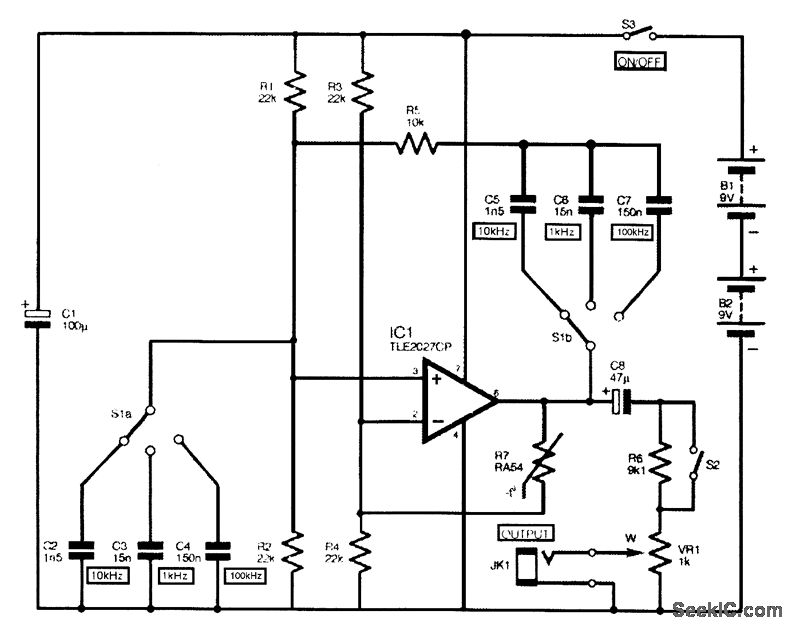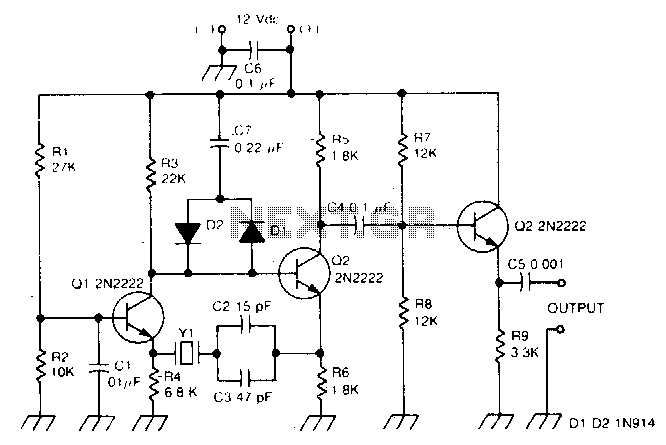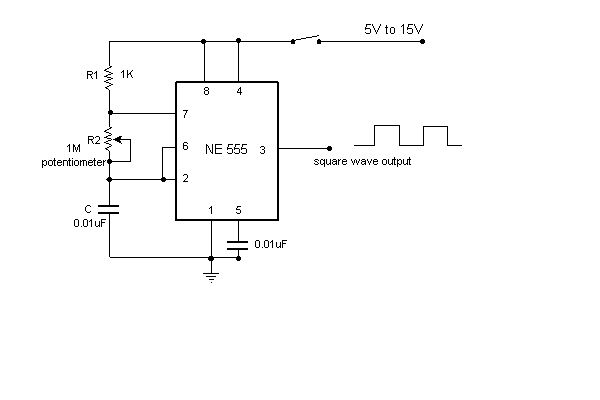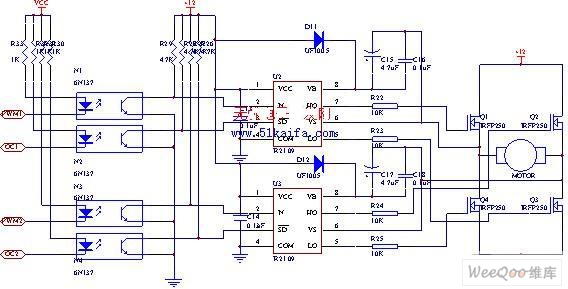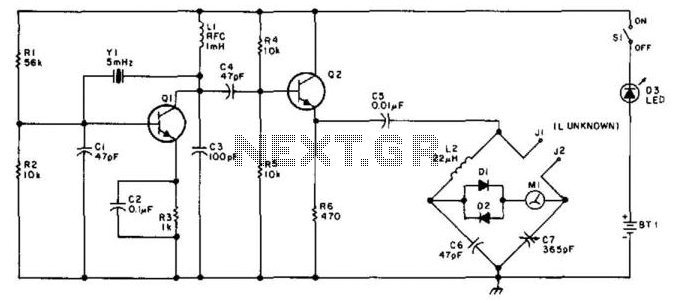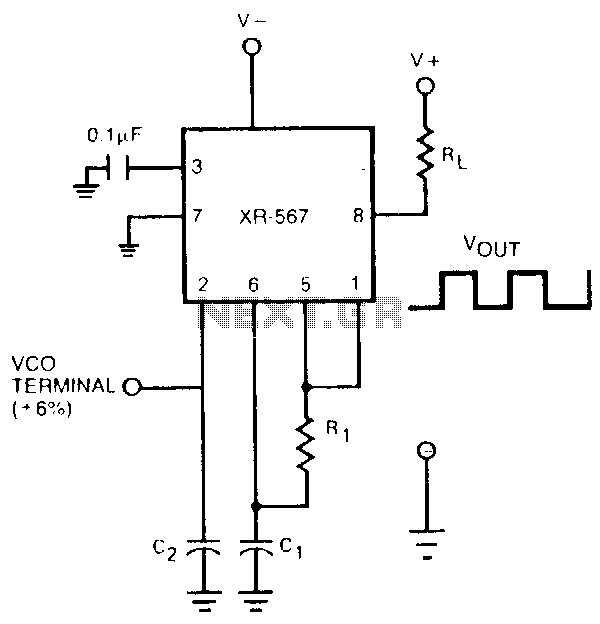
wein bridge oscillator
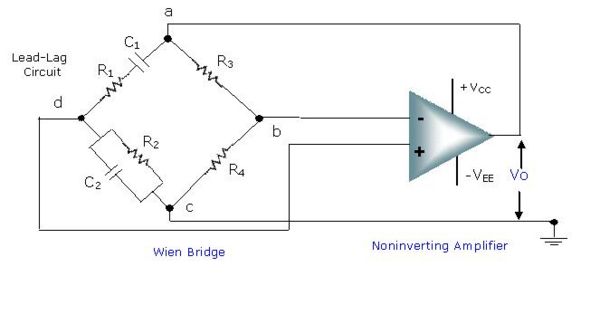
The Wien-bridge oscillator is a distinctive circuit that produces an oscillatory output signal without requiring a sinusoidal input source. Instead, it utilizes capacitors with initial voltages to generate the output. This circuit can be particularly beneficial when connected to a voltage follower to decouple the load from the source. The Wien bridge oscillator generates sine waves, and to maintain a consistent amplitude of these waves, a positive feedback system is implemented with a mechanism to limit gain. For the positive feedback system to function effectively, the waves being fed back to the amplifier must be in phase with the generated waves. Therefore, a phase shift network is necessary to ensure that the phases of the waves align, which, in the context of a positive feedback system, requires that the generated waves undergo a 360-degree phase shift during the feedback process.
The Wien-bridge oscillator is composed of a combination of resistors and capacitors arranged in a bridge configuration. The essential components include two resistors (R1 and R2) and two capacitors (C1 and C2), which form the Wien bridge. The output is typically taken from the junction of one of the resistors and one of the capacitors. The circuit employs an operational amplifier (op-amp) as the active element, which provides the necessary gain for oscillation.
To achieve oscillation, the gain of the op-amp must be carefully controlled. A common method for gain control is to use a thermistor or a light-dependent resistor (LDR) in the feedback loop. The resistance of these components varies with temperature or light intensity, respectively, allowing for automatic gain adjustment. This feedback mechanism ensures that the amplitude of the output sine wave remains stable, preventing distortion or clipping.
The phase shift network is critical for maintaining the stability of the oscillation. In the Wien-bridge configuration, the resistors and capacitors are selected such that they introduce a total phase shift of 360 degrees at the desired frequency of oscillation. This is achieved through careful selection of the component values, which can be calculated using the formula for the frequency of oscillation, given by:
\[ f = \frac{1}{2\pi R \sqrt{C1 \cdot C2}} \]
Where \( R \) is the resistance of R1 and R2 (assuming they are equal). The output frequency can be adjusted by varying the resistance or capacitance values.
In summary, the Wien-bridge oscillator is an essential circuit in electronics, particularly for applications requiring stable sine wave generation. Its unique ability to self-regulate amplitude through feedback and phase shifting makes it a versatile tool in signal generation and processing applications.The Wien-bridge oscillator is a unique circuit because it generates an oscillatory output signal without having a sinusoidal input source. Instead, it uses capacitors with initial voltages to create the output. This circuit can be especially useful if connected to a voltage follower to de-couple the load from the source.
ANS; A Wien bridge o scillator produces sine waves. In order for the sine waves to maintain a steady amplitude, a positive feedback system is used with some sort of control to limit gain. In order for the positive feedback system to work, the waves being "fed back" to the amplifier have to be in phase with the waves being generated.
Thus, you need a phase shift network to ensure that the phases of the waves match, which in the case of a positive feedback system means that the generated waves need to go through a 360o phase shift during the feedback process. 🔗 External reference
The Wien-bridge oscillator is composed of a combination of resistors and capacitors arranged in a bridge configuration. The essential components include two resistors (R1 and R2) and two capacitors (C1 and C2), which form the Wien bridge. The output is typically taken from the junction of one of the resistors and one of the capacitors. The circuit employs an operational amplifier (op-amp) as the active element, which provides the necessary gain for oscillation.
To achieve oscillation, the gain of the op-amp must be carefully controlled. A common method for gain control is to use a thermistor or a light-dependent resistor (LDR) in the feedback loop. The resistance of these components varies with temperature or light intensity, respectively, allowing for automatic gain adjustment. This feedback mechanism ensures that the amplitude of the output sine wave remains stable, preventing distortion or clipping.
The phase shift network is critical for maintaining the stability of the oscillation. In the Wien-bridge configuration, the resistors and capacitors are selected such that they introduce a total phase shift of 360 degrees at the desired frequency of oscillation. This is achieved through careful selection of the component values, which can be calculated using the formula for the frequency of oscillation, given by:
\[ f = \frac{1}{2\pi R \sqrt{C1 \cdot C2}} \]
Where \( R \) is the resistance of R1 and R2 (assuming they are equal). The output frequency can be adjusted by varying the resistance or capacitance values.
In summary, the Wien-bridge oscillator is an essential circuit in electronics, particularly for applications requiring stable sine wave generation. Its unique ability to self-regulate amplitude through feedback and phase shifting makes it a versatile tool in signal generation and processing applications.The Wien-bridge oscillator is a unique circuit because it generates an oscillatory output signal without having a sinusoidal input source. Instead, it uses capacitors with initial voltages to create the output. This circuit can be especially useful if connected to a voltage follower to de-couple the load from the source.
ANS; A Wien bridge o scillator produces sine waves. In order for the sine waves to maintain a steady amplitude, a positive feedback system is used with some sort of control to limit gain. In order for the positive feedback system to work, the waves being "fed back" to the amplifier have to be in phase with the waves being generated.
Thus, you need a phase shift network to ensure that the phases of the waves match, which in the case of a positive feedback system means that the generated waves need to go through a 360o phase shift during the feedback process. 🔗 External reference
